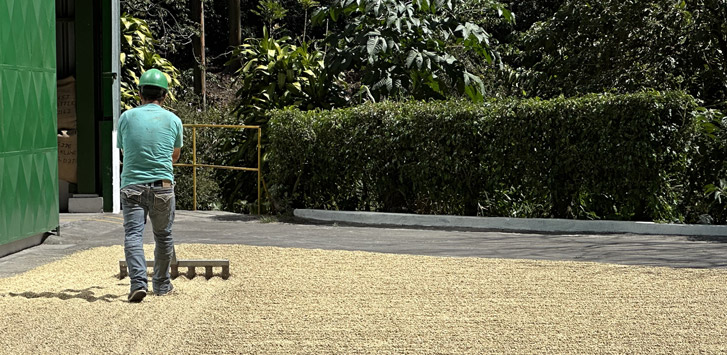
Harvesting high-quality coffee cherries and perfecting roasting levels are key to a good cup of coffee. But did you know that the coffee processing method has the largest impact on your cup of coffee? Let's break down what exactly this means.
What Does Coffee Processing Mean?
Coffee processing removes the coffee seed from the pulp, mucilage, and parchment. But it's not as easy as it sounds. Poor coffee processing can cause defects in the bean.
There’s four main coffee processing methods: natural process, wet process, wet hulled, and honey process. Each of these methods completely changes the sweetness, body, and acidity of your coffee.
Natural Process / Dry Process
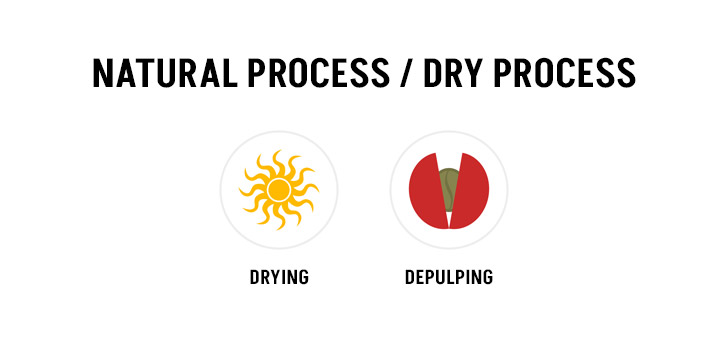
The natural process, or dry process, is often used in Ethiopia and drier countries. It's an old school processing method that's relatively straightforward.
Harvested coffee cherries are spread in a thin layer across a brick patio, raised bed, or table under the sun. For 3 to 6 weeks, farmers rake the beans back and forth throughout the day to prevent mold. During this time, the coffee beans ferment, as the sugars and mucilage latch onto the seeds. Once they reach 11% moisture levels, the beans are depulped and then stored to rest.
Natural process coffees are hard to replicate because of the various factors involved. From the raking temp to the sun temperature or cloud cover, there's many variables to account for. Each batch is just a little different from the others, making it a fun adventure for coffee lovers!
Natural Process Flavor Profile
People either love or hate dry processed coffees. Common tasting notes are blueberry, strawberry, tropical fruits, and honey. The coffee is often heavy-bodied, deep, and complex with a winey acidity. The Adame Gorbota 1, Yirgacheffe is a great natural process coffee to try.
Washed Process / Wet Process
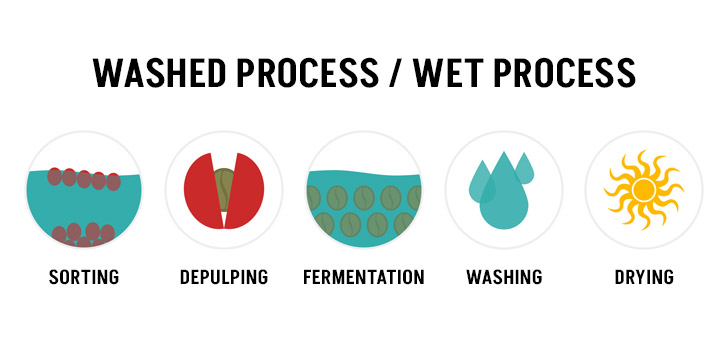
Coffee cherries are carefully chosen for the washed process, undergoing a float test and density test first. If they pass, the coffee cherries are mechanically depulped, removing all fruit flesh. Then, they ferment in a water tank for 18 to 72 hours, fully breaking down any remaining mucilage. Afterwards, the farmers rinse the beans and place them on a brick patio or raised bed to dry for 60 to 90 days.
There's multiple pros and cons to the wet process method. While it reduces risks of defects, it is more expensive and can waste a ton of water. Thankfully, farmers can reuse the water if they rebalance its pH levels.
Washed Process Flavor Profile
Washed coffees tend to have a bright acidity with increased complexity, a clean finish, and white wine undertones. You’ll also enjoy crisp flavors, a cane sugar-like sweetness, chocolate cupping notes, and a fruity acidity. These characteristics really come to life in the Finca Santa Margarita, Acatenango.
Wet Hulled Process
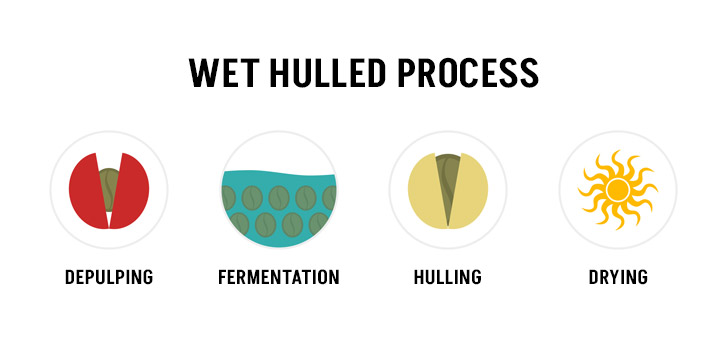
To start the wet hull process, a depulping machine removes the coffee seeds. A little mucilage is left on the outside of the seed to keep them moisturized, and then they're stored in a plastic tank. During this time, the mucilage creates a thick husk around the seed.
When the farmers take the seeds out of the tank, they remove the husk and parchment from the seeds in a process called hulling. Then, the beans are laid out to dry in the sun. This type of processing is most common in Indonesia where a humid climate can make drying difficult.
Wet Hulled Flavor Profile
Coffees that undergo wet hulling are often heavy bodied with cupping notes of chocolate and nuts and an underlying savory flavor. The Organic Taman Dadar, Kayumas is a great example of a wet hulled coffee.
Honey Process
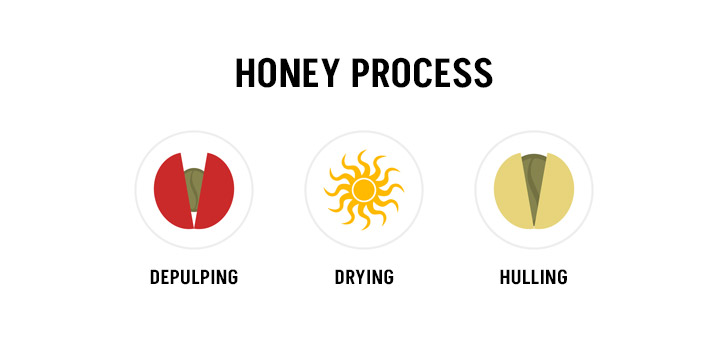
Most common in Central America, honey processing takes notes from both washed and natural coffees, combining the best of the two when done correctly. Recently, honey processing has grown in popularity because of its fruit-forward flavors and creamier mouthfeel.
Coffees that are honey processed are referred to by colors – black, red, yellow, and white. The color refers to how much flesh was left on the bean. Black honeys have the most flesh and are black in color, while white honeys have only a small amount of flesh left.
The honey coffee processing steps begin with depulping the coffee cherries, leaving a small amount of mucilage on the beans. Then, they’re laid out on drying tables or brick patios to sun dry. When the coffee beans are fully dry, the remaining mucilage is removed, and they're placed in storage.
Honey Processing Flavor Profile
Honey processed coffees are, generally, much sweeter than other types of coffees. They boast a thicker, cleaner body with rich notes, a syrupy sweetness, and pronounced acidity. The Organic 18 Rabbit Yellow is a must-try, honey processed coffee.
Conclusion
Coffee processing is an integral step in the coffee journey. It takes the raw coffee cherries and forms the flavor profiles that we all know and love. While you may not like every processing method, it's definitely worth trying each one!